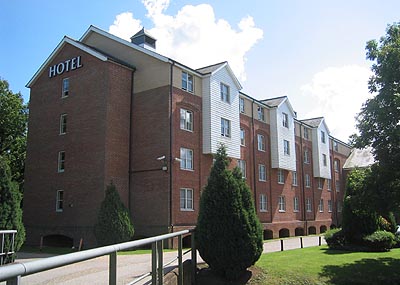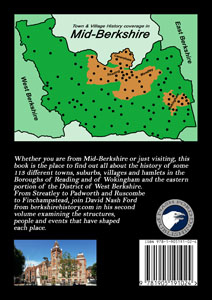 |
 |
||||||||
|
|
Sindlesham, often shortened to Sinsham in the 18th and 19th centuries, is an Anglo-Saxon word meaning Sunna's Water Meadow. Sunna was a local chieftain or king who lived at Sonning. Sindlesham and Bearwood were, until the 14th century, a southerly region of a very large parish of Sonning, which belonged to the Bishops of Salisbury. Robert de Sindlesham built a chapel-of-ease near his Sindlesham manor house in 1220, because he didn't think much of the muddy trip he had to take every Sunday to the mother-church at Sonning. The Vicar of Sonning protested since he then lost all the revenue from his Sindlesham parishioners. The matter was eventually settled when Robert agreed that the chapel should only be used by himself, his family and servants. The peasants would have to walk to Sonning. This building has long since disappeared and by the late medieval period, Sindlesham and Bearwood had become attached to Hurst parish and then Newland to Arborfield parish. The wood called Bishop's Bearwood was always claimed by the Bishops of Salisbury as their personal hunting chase, where they rode with their guests when staying at Sonning Palace. However, from 1300, there was a long running dispute over ownership with the King. The old park was eventually purchased by John Walter II, proprietor of the Times Newspaper, around 1830. Walter built himself an elegant house there, as well as St Catherine's Church for his estate workers in 1846. The church's dedication commemorates Walter's daughter who tragically drowned in the lake and there is a sad memorial to his grandson who did the same. It was this boy's father, John Walter III, who built the present magnificent Jacobean-revival Bearwood House at the height of his publishing reputation in 1864. The architect was Robert Kerr. Since 1921 it has been a school, originally for boys wishing to enter the Merchant Navy and now part of the Reddam House group. Read more history of Sindlesham and other nearby settlements, like Newland, Winnersh, Lower Earley, Woosehill & Limmerhill, in David Nash Ford's book, 'Mid-Berkshire Town and Village Histories'. Click to Order direct from the Author.
|
||||||||
| © Nash Ford Publishing 2001; Revised 2020. All Rights Reserved. | |||||||||



 Sindlesham
Sindlesham
